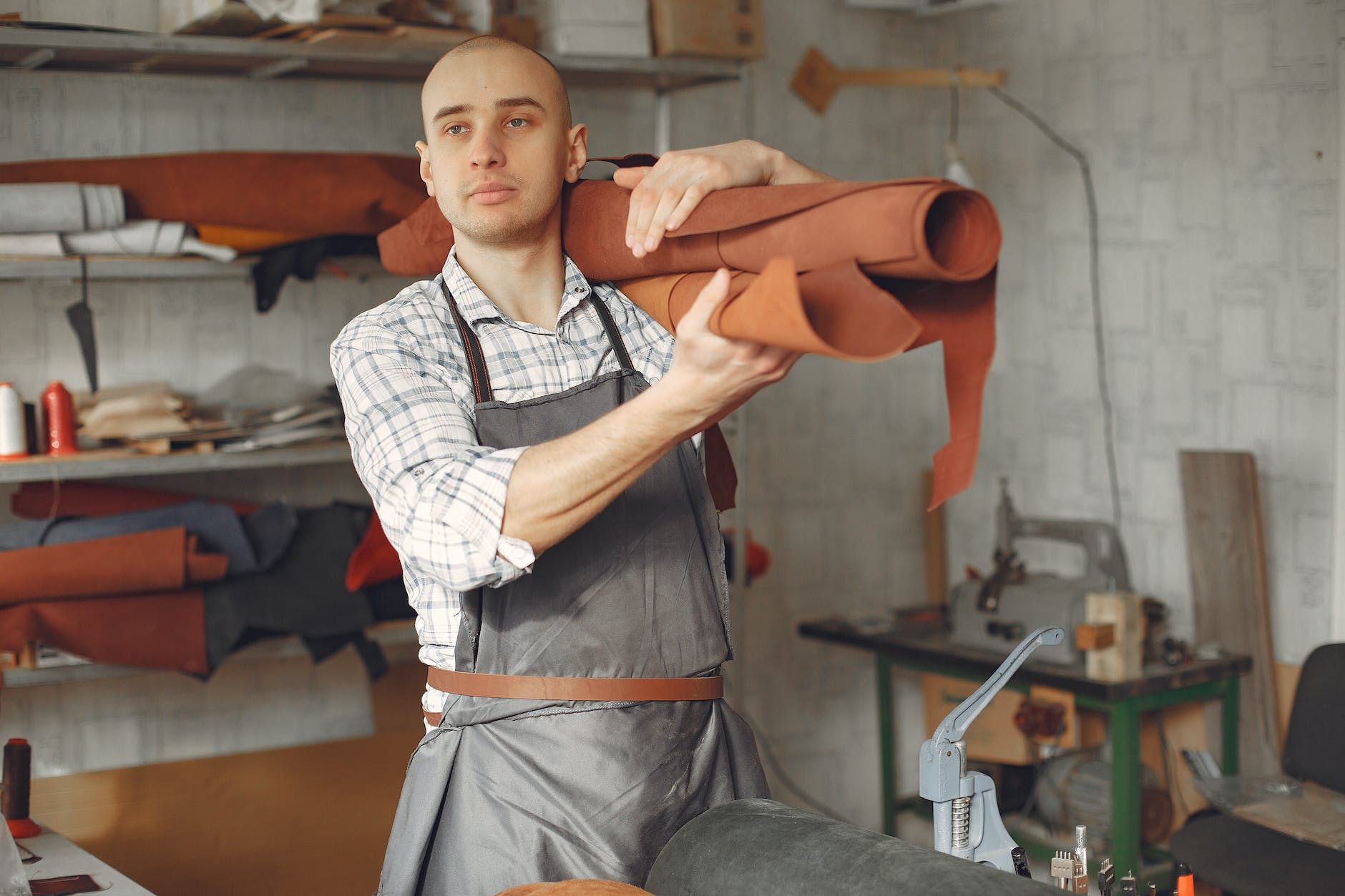Leatherworking Studio Essentials: Must-Have Tools and Materials
Quality Leather Selection for Each Project Type
The foundation for quality work begins with procuring appropriate types and weights of leather for intended products. Key options include:
Upholstery Leather
- Durability for high wear items like furniture and automotive
- Thick split hide layers usually topped with pigmented finish
- Stiff temper allows molded shaping without tearing
Garment Leather
- Soft and pliable temper for tailored clothing and accessories
- Thin lamb, deer, goat and cow leathers work best
- Tanning leaves stretch and breathability intact
Tooling Leather
- Mid weight cowhide takes detailed stamping and tooling well
- Consistent thickness aids precision carving
- Aniline dyes allow achieving deep uniform saturation
Matching leather properties to each project’s demands ensures ideal working properties and finished results.
Cutting: Essential Blades, Tools and Supplies
Proper cutting equipment allows achieving clean precise edges and patterns critical for professional looking pieces. Sharp fresh blades are essential:
- X-Acto knives with #11 blades for detail cuts
- Rotary fabric cutter for long straight cuts
- French skiver for consistent thin edges
- Flexible metal ruler as straight edge guide
- Self healing mat to protect work surfaces
- Adhesive tape for temporary securing of patterns
With quality cutting tools kept sharp, leather slices neatly for perfect assemblies and minimal waste.
Manual Stamps for Decorative Imprinting
Stamping designs by hand takes leatherworking beyond the functional into personal artistry. From simple lines to ornate motifs, options abound:
- Alphabet sets for monogramming and word art
- Corner stamps decorate edges and highlight details
- Line and filigree stamps add graphic interest
- Nature stamps like leaves, feathers and flowers
- Large background textures quickly create focal points
- Custom stamps can get created from personalized designs
Combined creatively, stamping allows quick embellishment limited only by imagination.
Tooling: Carving, Modeling and Decorative Tools
Various steel working tools impress, scribe and model textures by hand with striking effects. Common types include:
- Bevelers – For tapering and thinning leather edges
- Modelers – Rounded sculpting tips for molding, wrinkling, embossing
- Pear Shaders – For pressing background around stamps
- Swivel Knives – For detailed freehand cutting and carving
- Mallets and Spacers – For driving tools firmly and cleanly
- Awl – For punching tight holes and groover stitching guides
- Edge Slickers – For compressing and burnishing leather edges
Quality tooling elevates leather beyond the flat and static into sculptural artistry.
Stitching Needles, Threads, and Other Supplies
Hand-stitching adds beauty and strength when attaching leather pieces. Proper equipment prevents tearing and frustration:
- Harness Needles – With triangular points to pierce leather cleanly
- Waxed Linen Thread – For water resistance and strength
- Curved Needles – For securely joining linings and piping edges
- Thimbles – Prevent painful blistering from push pressure
- Beeswax and Conditioner – For keeping thread and leather pliable
- Edge Paint – For neatly concealing stitch holes along edges
With quality stitching supplies, joining leather becomes meditative, rhythmic, and handsomely durable.
Dyes and Finishing Supplies for Color and Protection
Dyes and protective finishes allow customizing color while imparting durability and sheen. Products to have on hand include:
- Leather Dyes – in essential colors like black, brown, red, yellow
- Acrylic Resolene – Waterproofs without stiffness
- Neatsfoot Oil – Conditions and preserves leather naturally
- Gum Tragacanth – Provides supple stiffening for shaping
- Edge Paint and Wax – Seals and protects edges
- Cotton Rags and Sponges – For applying dyes and finishes
- Disposable Gloves – Keep hands clean during finishing
Experimenting with dyes and finishes brings leather new life and vibrancy. Protective coatings prevent damage from handling and moisture.
Miscellaneous Studio Basics and Consumables
Various small necessities keep projects on track in the studio:
- Pencils and Pens – For pattern marking and notes
- Masking Tape – For temporarily securing pieces
- Snaps and Rivets – For closures and decorative accents
- Sandpaper – For smoothing rough edges
- Tissue Paper – For protecting in-progress works
- Utility Knife Blades – For frequent replacing to keep sharp
- Lighter – For slightly melting cut thread tips
- Foam Blocks – For cushioning and shaping forms
Having essential basics always stocked and organized maintains efficient creative flow in the leatherworking space.
Through diligent preparation of studio space and quality materials, leatherworkers ensure conditions allowing their skills to manifest works of lasting beauty and meaning. Patient focus on process cultivates excellence.
